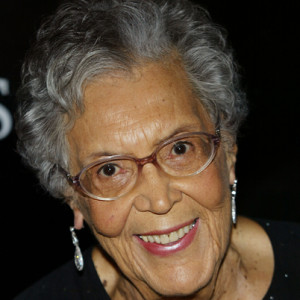Elizabeth Catlett (1915-2012)
artwork | resale art work | video
Biography
 Elizabeth Catlett was born in Washington, D.C. in 1915. Art historian Melanie Herzog describes Catlett as “the foremost African American woman artist of her generation.”
Elizabeth Catlett was born in Washington, D.C. in 1915. Art historian Melanie Herzog describes Catlett as “the foremost African American woman artist of her generation.”
Her work is celebrated as a visually eloquent expression of African American identity and pride in cultural heritage. Catlett has lived in Mexico for over 50 years, as a citizen of that country since 1962, and she and her husband artist Francisco Mora, have raised their children there. For 20 years she was a member of the Taller de Grafica Popular (Popular Graphic Arts Workshop) and she was the first woman professor of sculpture at the Universidad Nacional Autonoma de Mexico.
Her extraordinary career has stretched from her years as a student at Howard University during the 1930s through various political and social movements-including the Chicago Renaissance of the 1940s, the Black Power and Black Arts movements, the Mexican Public Art Movement, and feminism-which have informed her art.
Catlett is a fascinating and pivotal intercultural figure whose powerful art manifests her firm belief that the visual arts can play a role in the construction of meaningful identity, both transnational and ethnically grounded.
In 1940 Catlett became the first student to receive an M.F.A. in sculpture at the University of Iowa. While there, she was influenced by American landscape painter Grant Wood, who urged students to work with the subjects they knew best. For Catlett, this meant black people, and especially black women, and it was at this point that her work began to focus on African Americans. Her piece Mother and Child, done in limestone in 1939 for her thesis, won first prize in sculpture at the American Negro Exposition in Chicago in 1940.
She studied ceramics at the Art Institute of Chicago in 1941, lithography at the Art Students League of New York in 1942-1943, and with sculptor Ossip Zadkine in New York in 1943.
In 1946 Catlett received a Rosenwald Fund Fellowship that allowed her to travel to Mexico where she studied wood carving with Jose L. Ruiz and ceramic sculpture with Francisco Zúñiga, at the Escuela de Pintura y Escultura, Esmeralda, Mexico. She later moved, to Mexico, married, and became a Mexican citizen.
In Mexico, she worked with the Taller de Gráfica Popular, (People’s Graphic Arts Workshop), a group of printmakers organized in 1936 and dedicated to using their art to promote social change. There she and other artists created a series of linoleum cuts on black heroes. They “did posters, leaflets, collective booklets, illustrations for textbooks, posters and illustrations for the construction of schools, against illiteracy in Mexico.”
She became the first female professor of sculpture and head of the sculpture department at the National Autonomous University of Mexico, School of Fine Arts, San Carlos, in Mexico City, in 1958, and taught there until retiring in 1975. She continues to be active in the art community of Cuernavaca, Morelos.
She has received many awards including the Women’s Caucus For Art.The Graphic Arts Workshop has won an international peace prize because, of Elizabeth Catlett.An Elizabeth Catlett Week was proclaimed in Berkeley, California,and an Elizabeth Catlett Day in Cleveland,Ohio.She is an honorary citizen of New Orleans.She received an honorary Doctorate from Pace University,in New York and was accompanied to the presentation by fellow sculptor and good friend Manuel Bennett.